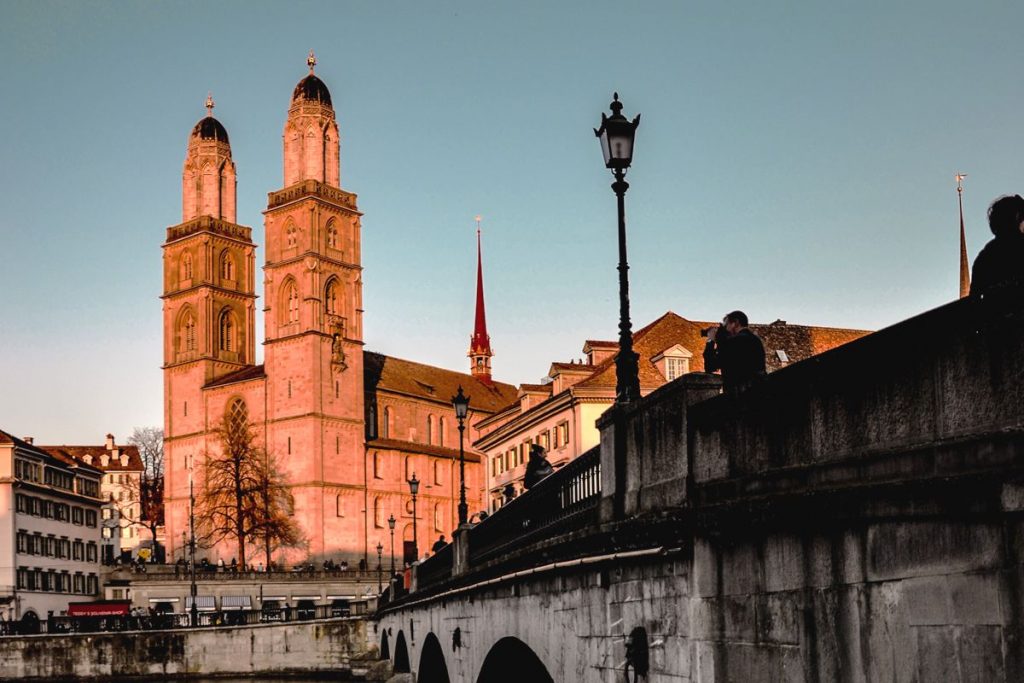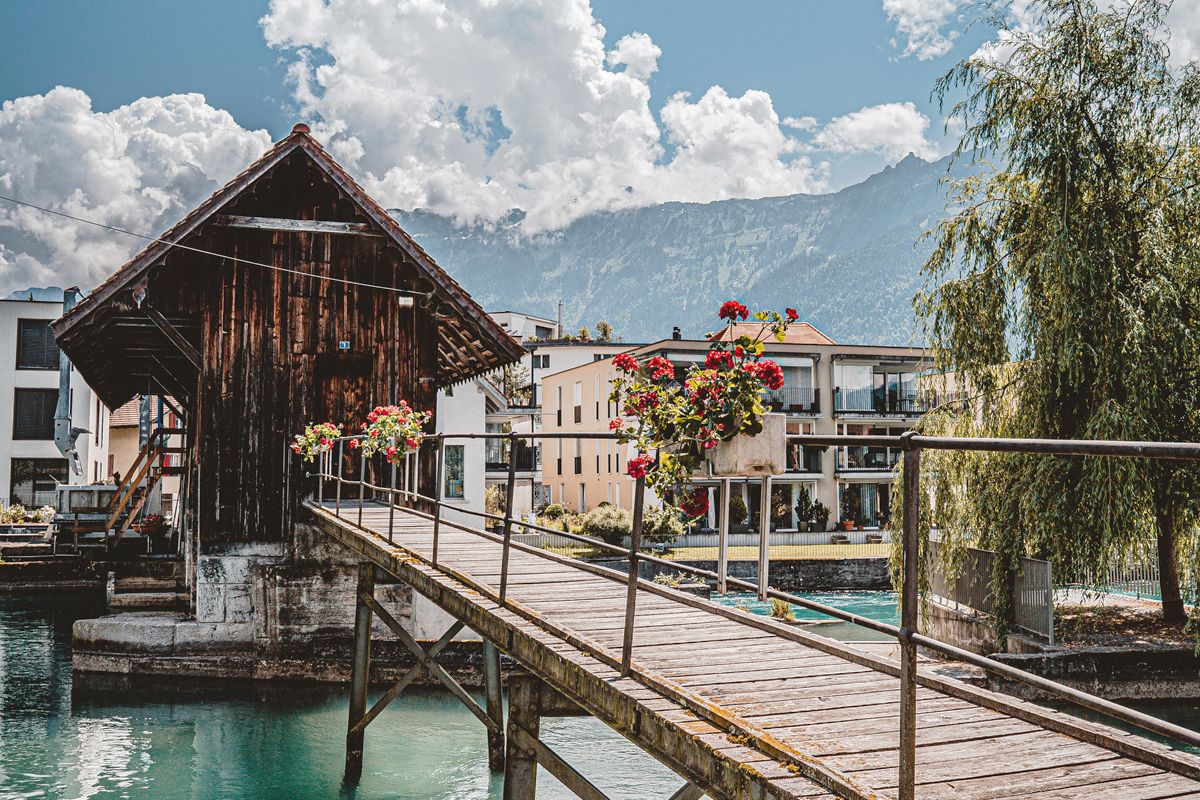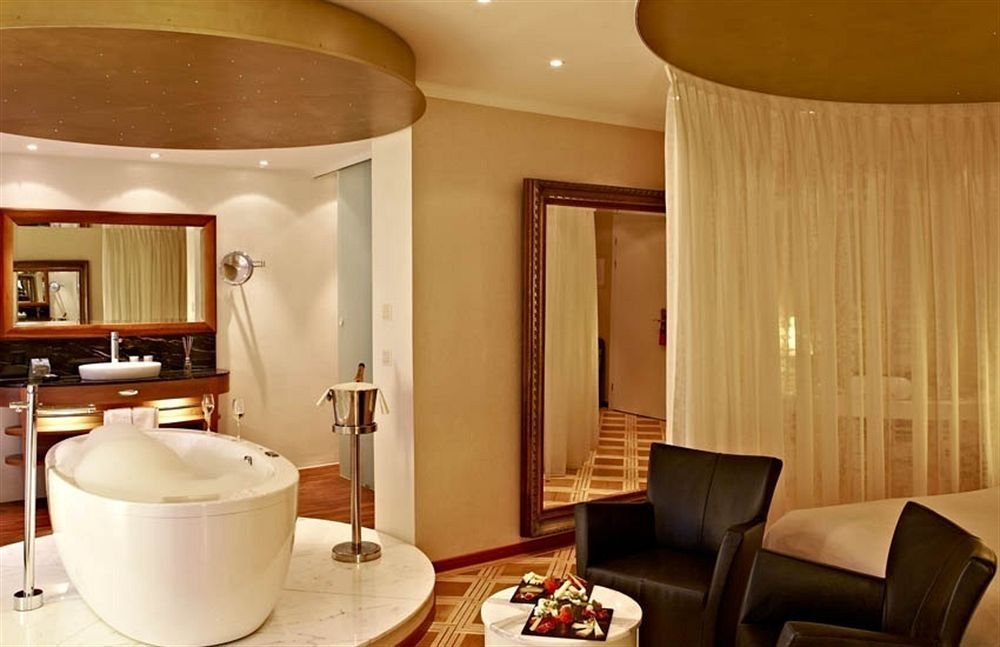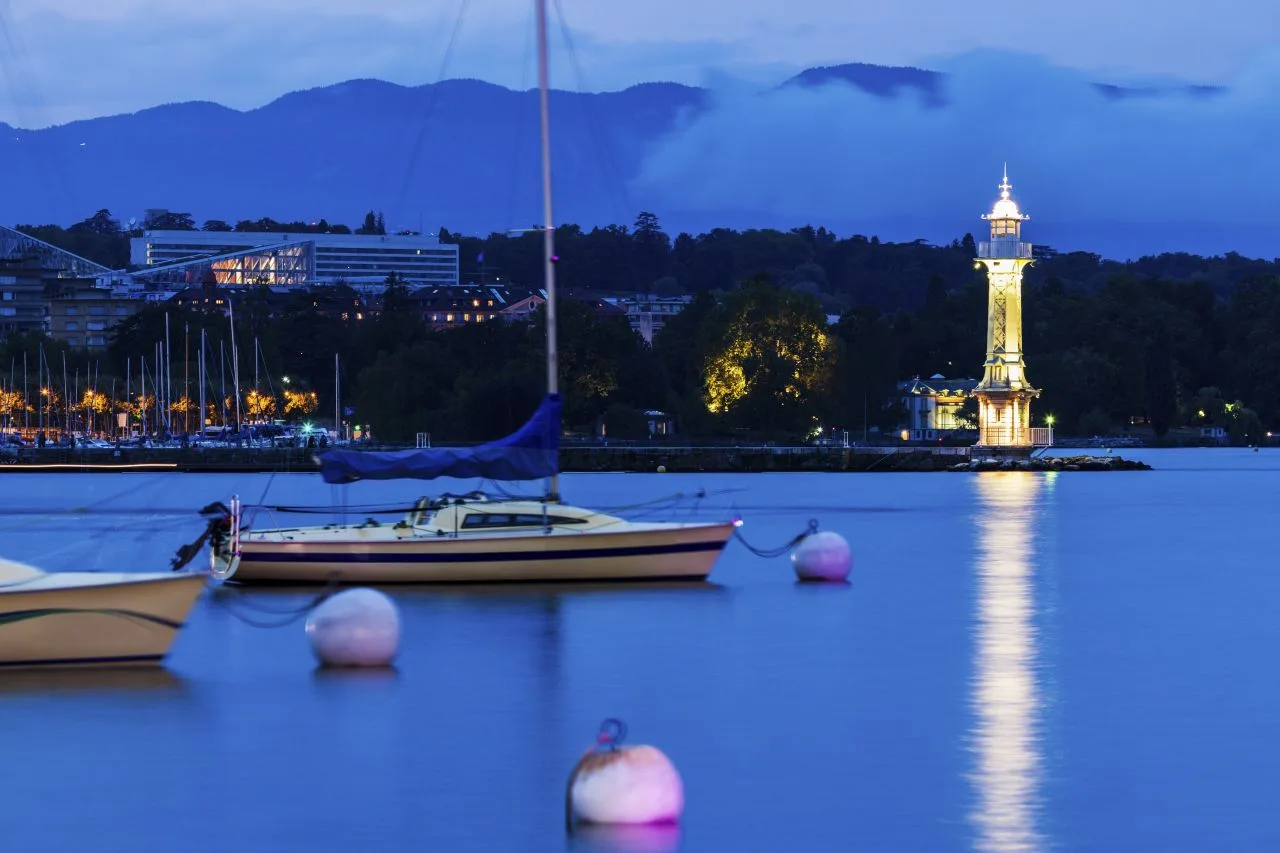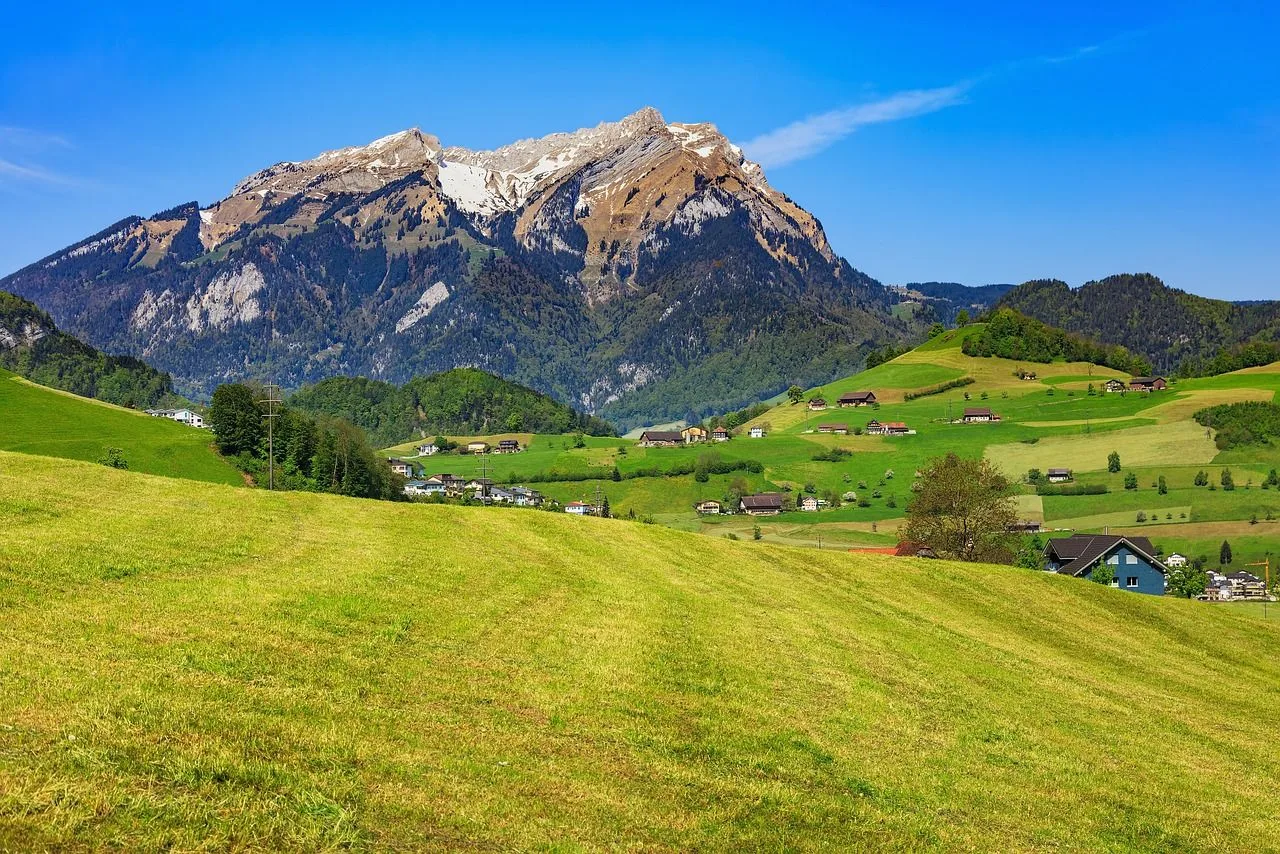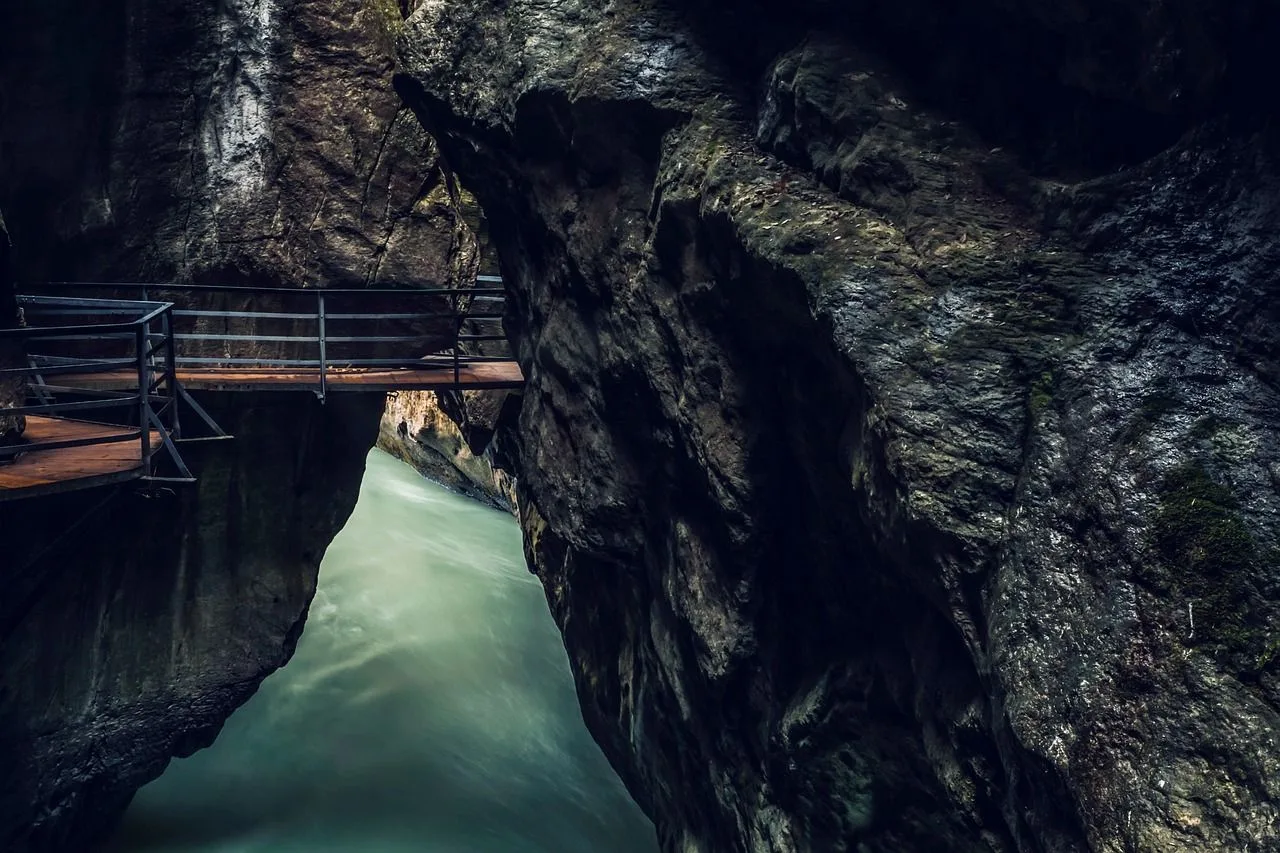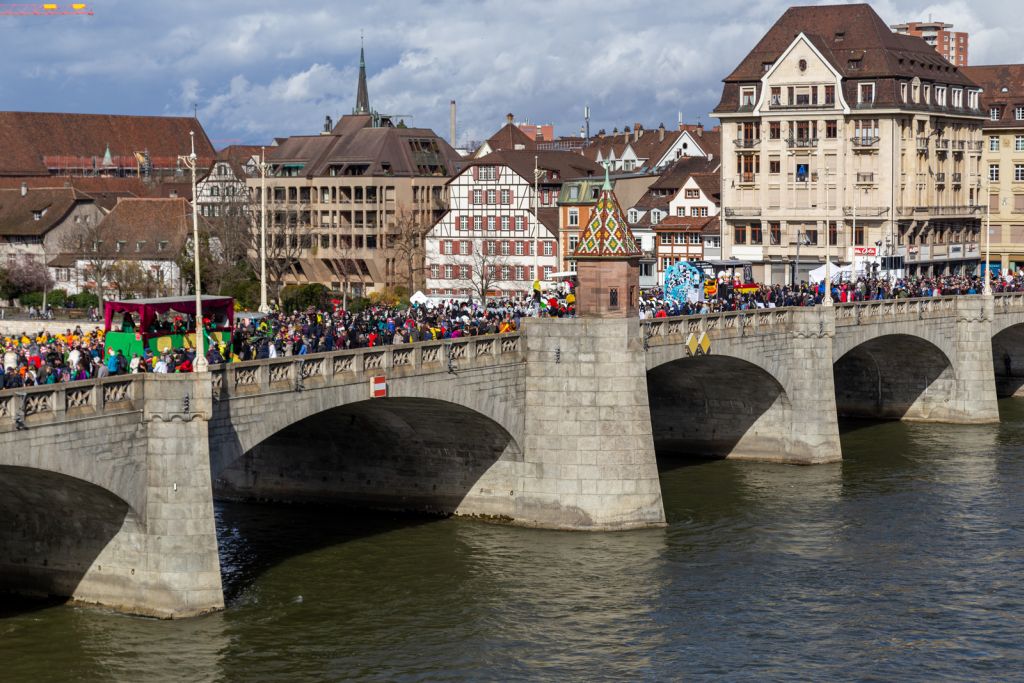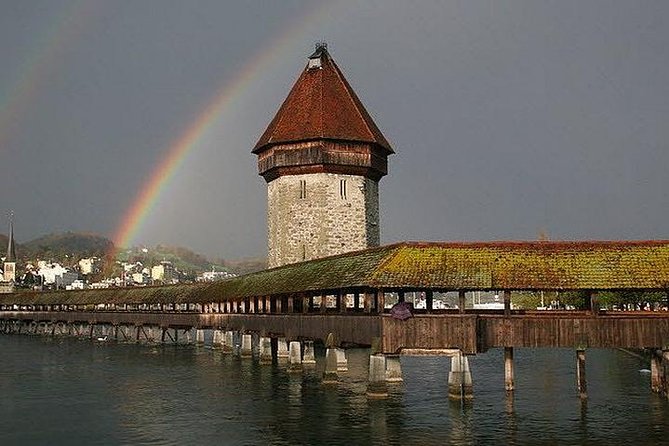Zürich City Tour
Monuments and hidden gems

On this personalized 4-hour Zürich City Tour, you’ll see the city’s most popular sights as well as some lesser-known jewels. Private tours of Zurich allow you to view the sights you wish to see at your own pace with a knowledgeable guide.
Take in sights like the Zurich Opera House, the Grossmünster or Fraumünster churches, or the Swiss National Museum if you’re in the mood for culture. Take a stroll down the Bahnhofstrasse and take in the stunning views of the Limmat River as you go. Travel by bus, cable car, riverboat, or tram as you make your trip.
Highlights
- Private 4-hour city tour of Zurich
- Explore the Swiss city of Zurich with a private guide and customize your route as you please
- Admire top landmarks such as the opera house and Grossmünster Church
- Stroll along Bahnhofstrasse and gaze over the Limmat River
- Enjoy the freedom to travel by bus, cable car, riverboat, or tram
Itinerary
Zurich HB
This is the main train station In Zurich, Hauptbahnhof. Even though a station first opened here in 1847, the current station building dates from 1871. The Nordtrakt and the Sudtrakt are the names given to the groups of buildings that surround the Haupthalle.
With the construction of new platforms a few hundred meters short of the original buffer stops in 1933, the capacity of the station was enhanced. A new shopping mall has been built beneath the Haupthalle, and beneath it is a set of underground platforms that are primarily used by local trains, but also certain Swiss mainline trains, which travel through the area.
Anyone visiting Zurich Main Station over the holidays is in good hands here: Europe’s largest chandelier ripples with light and color, a visual experience that is hard to beat.
Weighing approximately 1.8 tons, 25,000 LED light points emit light into hundreds of hanging strands. Each of the LED lights can be controlled individually, and instead of restricting control of light colors and effects to staff, Zurich HB made the chandelier an interactive experience for visitors, who controlled the colors and effects via a display with touchscreen functionality the chandelier can choose.
Designed by Aroma AG and produced by MK Illumination Switzerland, the chandelier is extremely popular and received a prestigious Xaver Award in 2018.
Bahnhofstrasse
After the Main Railway Station in Zurich was built, the world-famous shopping avenue was born. A 1.4-kilometer-long bridge connects Lake Zurich with the city’s main railway station, which was built on the place where city moats were 150 years ago (0.87 miles).
Numerous shops and department stores can be found in the area, including the Swiss banking center of Paradeplatz. The Bahnhofstrasse is a popular destination for both locals and tourists, and it’s always a good idea to stop by. When it’s warm outside, you may take a leisurely stroll along the lake and sip mulled wine or hot chocolate at every turn.
Bahnhofstrasse provides access to the historic old town through Rennweg and Augustinergasse.
Lindenhofplatz
Located in the middle of the city, Lindenhof is an oasis that looks back on a long and fascinating past.
The Old Town, Grossmünster Church, City Hall, the Limmat River, the university, and the Swiss Federal Institute of Technology can all be seen from this vantage point.
Additionally, Lindenhof was the location of several historical occurrences. This location was once the site of an early fourth-century Roman fort that was replaced by a regal palace built by Charlemagne’s grandson in the ninth century.
Inhabitants of Zurich continued to assemble here right up until the beginning of the modern period. It was on this site that the oath of allegiance to the Helvetic Constitution was sworn in 1798.
Located in the middle of the city, Lindenhof is a refuge of peace and tranquillity, and a gathering place for chess enthusiasts.
Fraumunster Church
Zurich’s Fraumünster Church, with its distinctive green spire, is one of the city’s most well-known sights. Glass windows of Marc Chagall and Augusto Giacometti are particularly well-known.
On the other side of the river from the Grossmünster, this church dates from the middle of the ninth century. The five stained-glass windows created by Marc Chagall in the 1960s, as well as the rosette in the south transept, draw a large number of people today. Augusto Giacometti’s “The Heavenly Paradise” (1945) is another notable glass window in the north transept of the cathedral.
The organ at the Fraumünster Church in Zurich has 5793 pipes, making it the largest in the canton. Frescos by Paul Bodmer depict the story of how a monastery was founded and of the patron saints Felix and Regula of the city.
Grossmunster
One of Zurich’s most recognizable landmarks is the Grossmünster, an Evangelical Protestant church in the city’s Old Town. Since it was first completed in 1100, this Romanesque church underwent various renovations.
Huldrych Zwingli and Heinrich Bullinger ignited the Reformation in the Grossmünster during the first half of the 16th century. Johann Caspar Voegeli and John Hagge Mille built the distinctive tops to the neo-Gothic towers between 1781 and 1787. Gustav Gull and Hermann Fietz executed the interior modifications between 1913 and 1915.
The Romanesque crypt, the Romanesque capitals in the church and cloister, the Augusto Giacometti stained glass windows from 1932, the Otto Münch bronze doors from 1935 and 1950, and the Reformation museum in the cloister are all well worth visiting. There are tours offered with a guide.
There are two Grossmünster Towers in Zurich, and one of them is called Karlsturm. It takes 187 steps to reach the tower’s vantage point, from where you can see Zurich’s lakeside skyline, the city’s famous roofs, and a panorama of the surrounding peaks of Switzerland.
Niederdorf
The Niederdorf’s historic Old Town section is affectionately referred to as the “small village” (“Dörfli”) by residents.
In addition to its many tiny stores, antiquarian bookshops, and craft studios, Grossmünster is a wonderful place to visit both during the day and at night. In addition, the Niederdorf brilliantly encapsulates the city’s distinct charm. Schober-Péclard, a listed building with a boutique and confectionary inside, is an excellent example of how to enjoy Zurich’s history, architecture, and shopping all at once.
Paradeplatz
The Paradeplatz is the heart of the Bahnhofstrasse and an important tram junction near Lake Zurich. Ever since the major Swiss banks set up their headquarters here, Paradeplatz has made a name for itself as Switzerland’s largest currency exchange place. Meanwhile, small streets such as Rennweg or Augustinergasse keep branching off into the picturesque old town.
Buerkliplatz
Besides being a dock for boats, Bürkliplatz is also a market, an art space, and an event venue with a view of the Alps across Lake Zurich.
During the demolition of the old town fortification, Bürkliplatz was formed. From 1882 until 1887, city engineer Arnold Bürkli was in charge of building the lakefront park. Lakeside promenade with Quaibrücke (lakeside bridge) and boulevards, meadows, and parks was built along the lake banks.
Bürkliplatz is now a pier and a starting point for Lake Zurich tours, making it a popular destination for tourists. Numerous events are held on the property. The “Bürklimäärt” weekly vegetable market and the weekly flea market take place here during the summer. There are a number of athletic events that begin and end in the square.
Opernhaus – Zurich Opera House
Opera productions, ballet choreographies, concerts, song recitals, and a wide range of programs for young performers make the Zurich Opera House one of Europe’s most successful opera houses.
An icon in Zurich’s skyline, the opera house offers a glimpse into operatic history from the beginnings of the art form all the way up to the present day. One of the institution’s most popular events is its “Opera in the Park” or “Ballet for All” outdoor performances.
“Opera Company of the Year” and “Best Opera House” in the international opera industry” were given to the Lake Zurich cultural institution in 2014 and 2019 respectively.
Top worldwide vocalists and sought-after directors and choreographers, as well as up-and-coming talents in singing, ballet, and orchestra training, are all committed to the festival.
Universität Zürich, Hauptgebäude
The main building of the University of Zurich is a central building of the University of Zurich, which was completed in 1914, expanded in 1969, and partially structurally modified in 1991 and 2002.
Limmatquai
A walk down Limmatquai takes you through the heart of Zurich’s historic Old Town, through numerous attractions and hipster hangouts.
The Limmatquai promenade follows the river Limmat through Zurich’s historic Old Town. Between Bellevue and Central, Limmatquai invites you to stroll, shop, and take in the sights. At the Rathaus (city hall), you may see the Grossmünster and Wasserkirche churches, and many guildhalls have eateries.
These restaurants combine old-world charm with traditional Zurich fare. In addition to Limmatquai’s Limmatquai pedestrian area, fashionable boutiques can be found under the arcades near the Rathaus.




